What is a Customer Bond?
Customer Bonds are the components of your Shopify store linking your visitors to products.
A Bond is the ‘glue’ connecting your marketing and ecommerce functions – giving your storefront structure, identity, and performance. When Customer Bonds are broken or missing you get low conversions.
Once bonds are solid and aligned, you have a rich, beautiful, high-performing Shopify store.
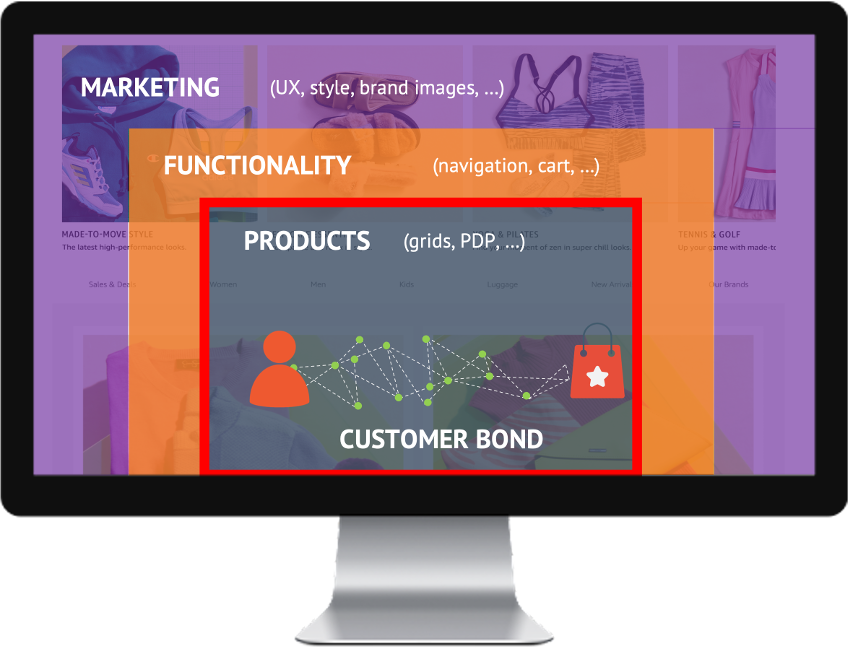
Symptoms of weak Customer Bonds.
Your Shopify metrics are leading indicators of damaged or missing bonds.
| LOW CART RATE Visitors can’t discover products of interest and leave. |
|
| HIGH CART ABANDONMENT RATE Shoppers unsure if they made the right product choices. |
|
| LOW TIME ON SITE Without deeper engagement the chance visitors connect with relevant products evaporates. |
|
| MOBILE REVENUE GAP Sales from mobile traffic have significantly lower rate than non-mobile visitors. |
Customer Bond Building challenges.
Connecting different audiences with relevant products – across different phases of their buying journey – is super complex problem.
‘ANONYMOUS’ TRAFFIC
Over 90% of your traffic are unknown visitors. Whose needs and preferences are mysteries.
MESSY DATA
Shopify customer, product, and transaction data are fragmented and disconnected from live web visitor data.
TECHNICAL COMPLEXITY
Blending editorial content and dynamic products requires advanced coding.
MACHINE LEARNING
Customer Bond Building only works with use of the most advanced machine learning algorithms.
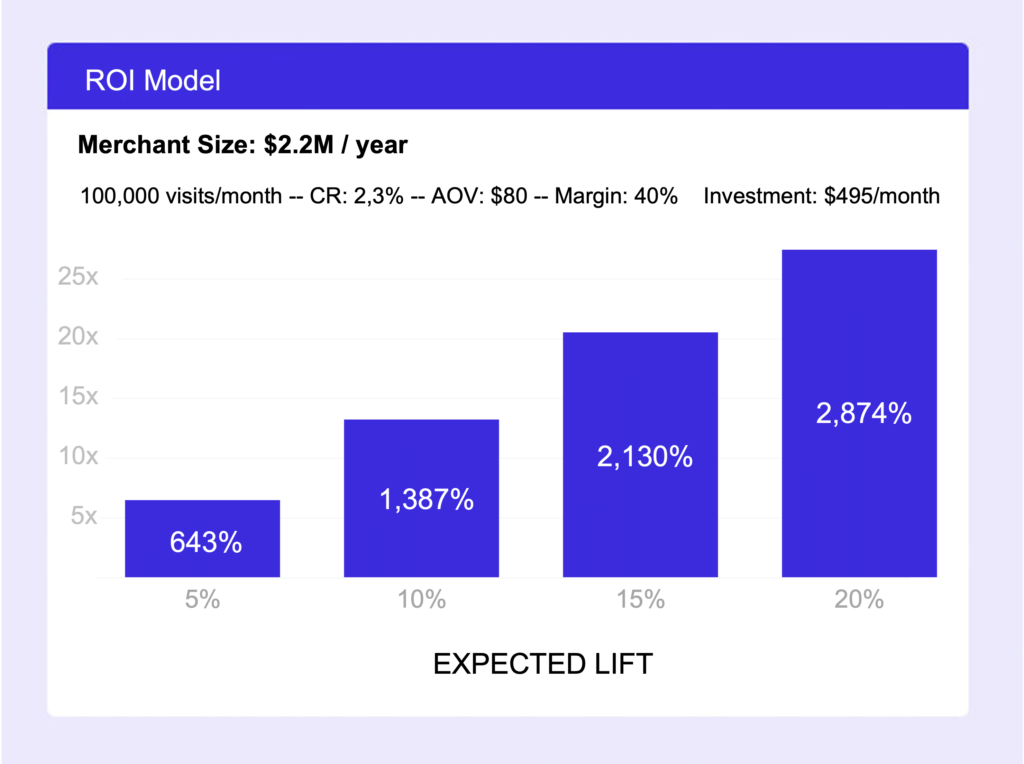
Is Customer Bond Building actually worth it?
Yes! It’s very low risk with a very high upside.
LOW RISK: the break even point is very low: 0.5% – 0.7% – larger the brand; lower the break even point;
HIGH UPSIDE: with expected lift of 10% or more, you’ll get more than 10x ROI
(Too good to be true? Run your own risk/reward analysis, try our free ROI Calculator)
CASE STUDY
Can Customer Bond Building fix Shopify’s product discovery problem? (Spoiler: Yes)
UNIQUE INSIGHT
Visitors’ average time on site directly correlates with revenue per visitor (RPV) metric, which explains why mobile revenue per visit is way below desktop RPV.
With customer bond building, this brand is boosting mobile visitor time on site, and as a result, they’re significantly increasing revenue-per-visit (RPV) of visitors.

RESULTS
Without Obviyo:
Time on site: 153 seconds
Revenue per visit: $3.59
With Obviyo:
Time on site: 554s (▲ 236%)
Revenue per visit: $17.86 (▲ 600%)
Time to results: 4 weeks
Customer Quote
“If you are looking to replicate the Amazon product discovery experience on your own site to influence more conversions and sales, this is the app for you. We went live quickly, and continue to add automated recommendations across our whole site, including the cart. The support team have been very helpful during our initial rollout, and the Amazon Personalize machine learning is a seriously powerful stuff!”
– Ecommerce Director, DTC Fitness Brand
Meet Obviyo’s Customer Bond Building platform.
Rapid evolution of machine learning technologies is changing the nature of Shopify’s buying experience.
It all starts with HyperBlocks™
HyperBlocks are-ready-to go live content templates driven by dynamic web, customer, and product data blended with your branded editorial to help visitors discover products of interest on your Shopify store.
HYPER → as in Hyper-Personalization. The ability of AI to make real-time suggestions based on visitor actions and context.
BLOCK → as in Content Block. The ability to blend branded content with dynamic product lists.
Obviyo has built a deep library of HyperBlocks you can add to your Shopify in literally minutes.
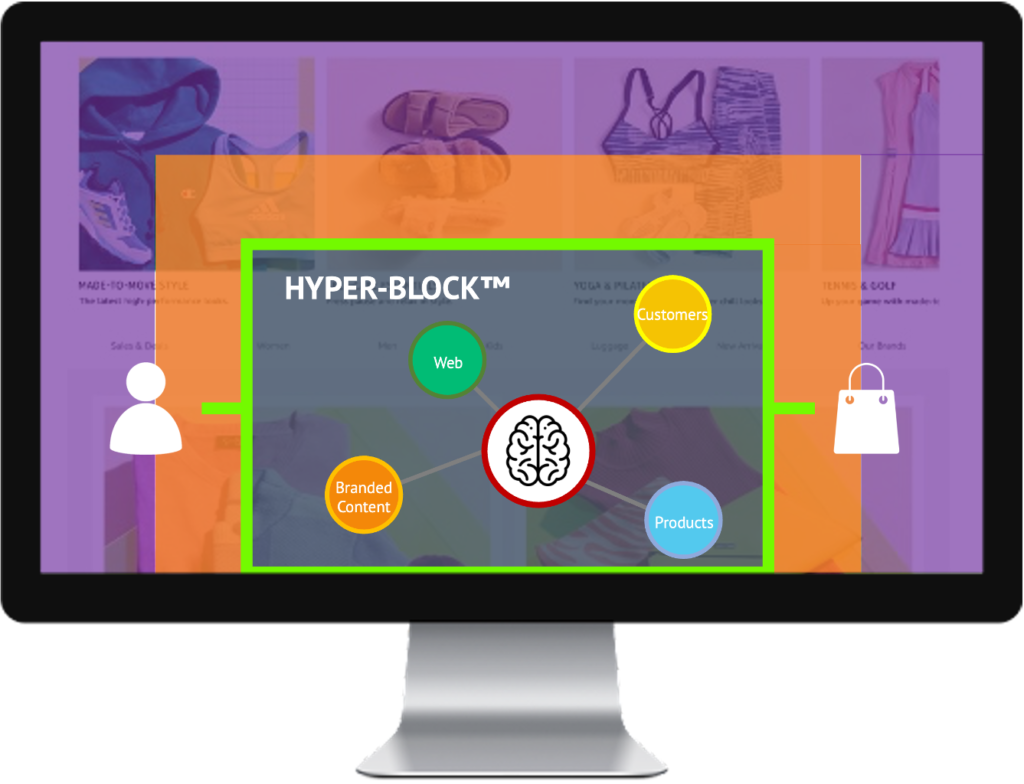
The recipe for a successful Customer Bond Building program.
There’s no single HyperBlock that will auto-magically connect visitors with all your products. That’s why you need to use many different HyperBlocks. Designed to bond with different audiences, having different product needs, at different stages of their buying journey, acting in different ways.
| VISITORS Every site is designed with a buyer persona in mind – widen the spectrum of buyer persona experiences based on product features or brand affinity with lifestyle or product imagery and hyper-personalized collections. |
|
| PRODUCTS Every product has its own market – sell more of long-tail products hyper-personalize product discovery by curating products by style, brands, or other properties. |
|
| BEHAVIOR Visitor decisions are driven by their needs and state in the buying lifecycle – surround visitors with relevant brand and product experiences throughout the different phases of their purchase journey. |
|
| CONTENT Branded content drives market differentiation and brand equity – blend branded content with highly personalized product selections without any coding or technical dependency. |
|
| SHOPPING No store can live on one-time and one product purchases alone – give customers the helpful nudge along the way. |
|
| GOALS Avoid price discounting – serve customers or cohorts of buyers who have an affinity to buy a specific product or products with specific attributes. |
The ‘Amazon Way’.
We coined the term, but Amazon is the biggest practitioner of Customer Bond Building.
The orange circles on the image here indicate customer bond building ‘blocks’ on Amazon’s web pages.
With Obviyo’s HyperBlocks you can bring an ‘Amazon grade’ shopping experiences to your Shopify store.

Mobile specific Customer Bonds.
Mobile visitors spend less time on your store than desktop visitors. While buying journeys are way more fragmented. So, the window of opportunity to bond with those customers is very small.
With Obviyo you can completely reimagine your mobile shopping experience – adapting to different visitor needs and device limitations.
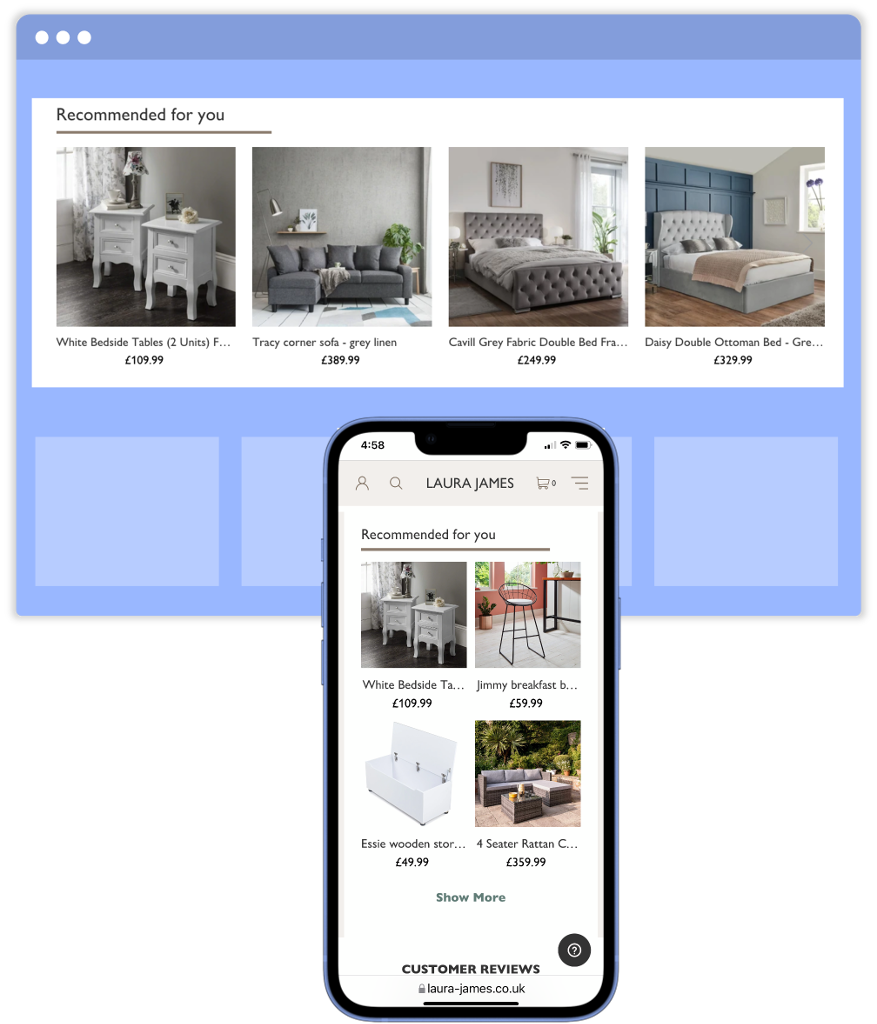
HyperBlock distribution on your site.
With Obviyo you do not have a shortage of HyperBlocks. However, before you go turning everything on, let’s explore the right balance of blocks for each of the key pages on your site.
If Amazon.com is a reference point then a bow-tie is the best representation of what your HyperBlock distribution should look like.
At the top of the funnel you should cast a wide net (many HyperBlocks on a page), then gradually narrow it down until a visitor adds the first product to the cart and then gradually widen to upsell or cross sell.
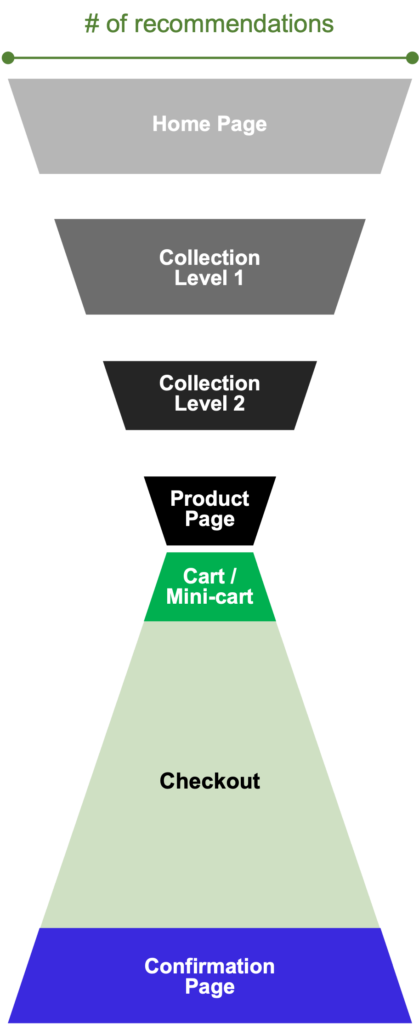
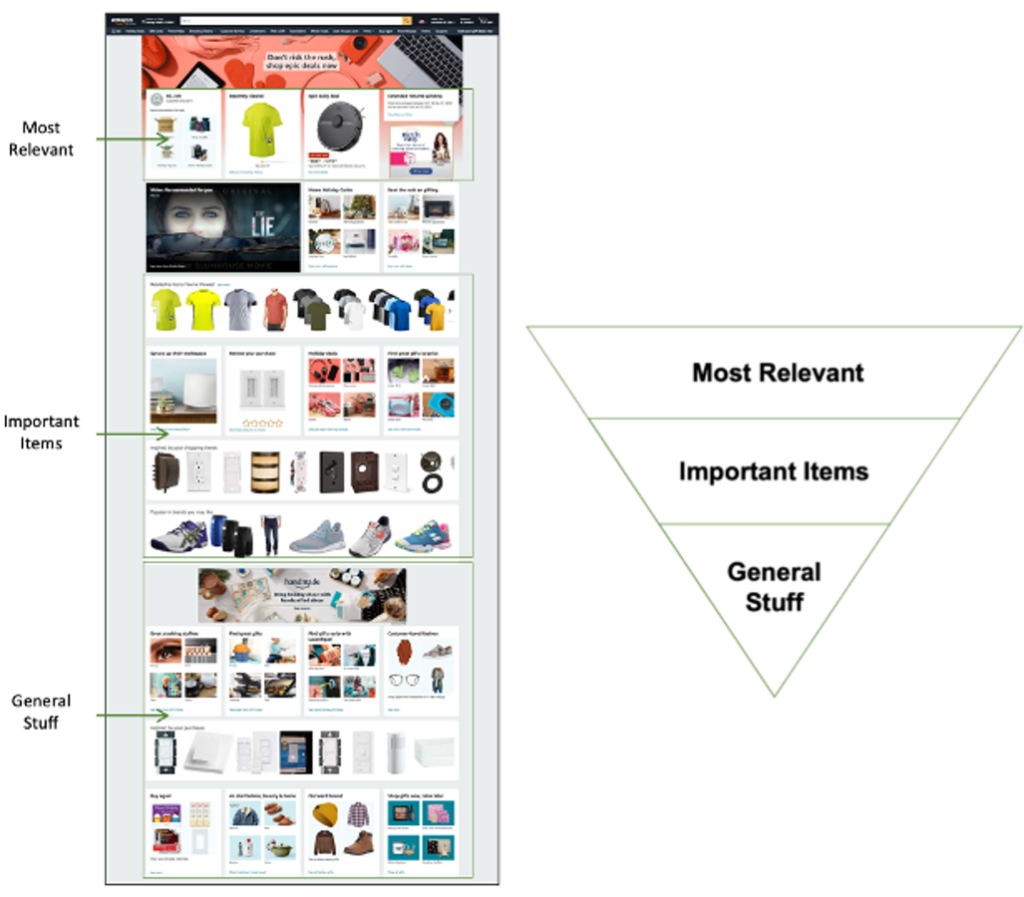
HyperBlock Ordering.
To provide a framework for on-page ordering of HyperBlocks let’s borrow a simple concept called the ‘inverted pyramid’ – it’s used to effectively capture attention and communicate information in a logical manner.
At the top of the page, you should display content most relevant to each visitor as possible. For example, if a visitor is a returning customer, they are met with personalized messages and a list of unique product recommendations.
Lower down HyperBlocks might become more general.
